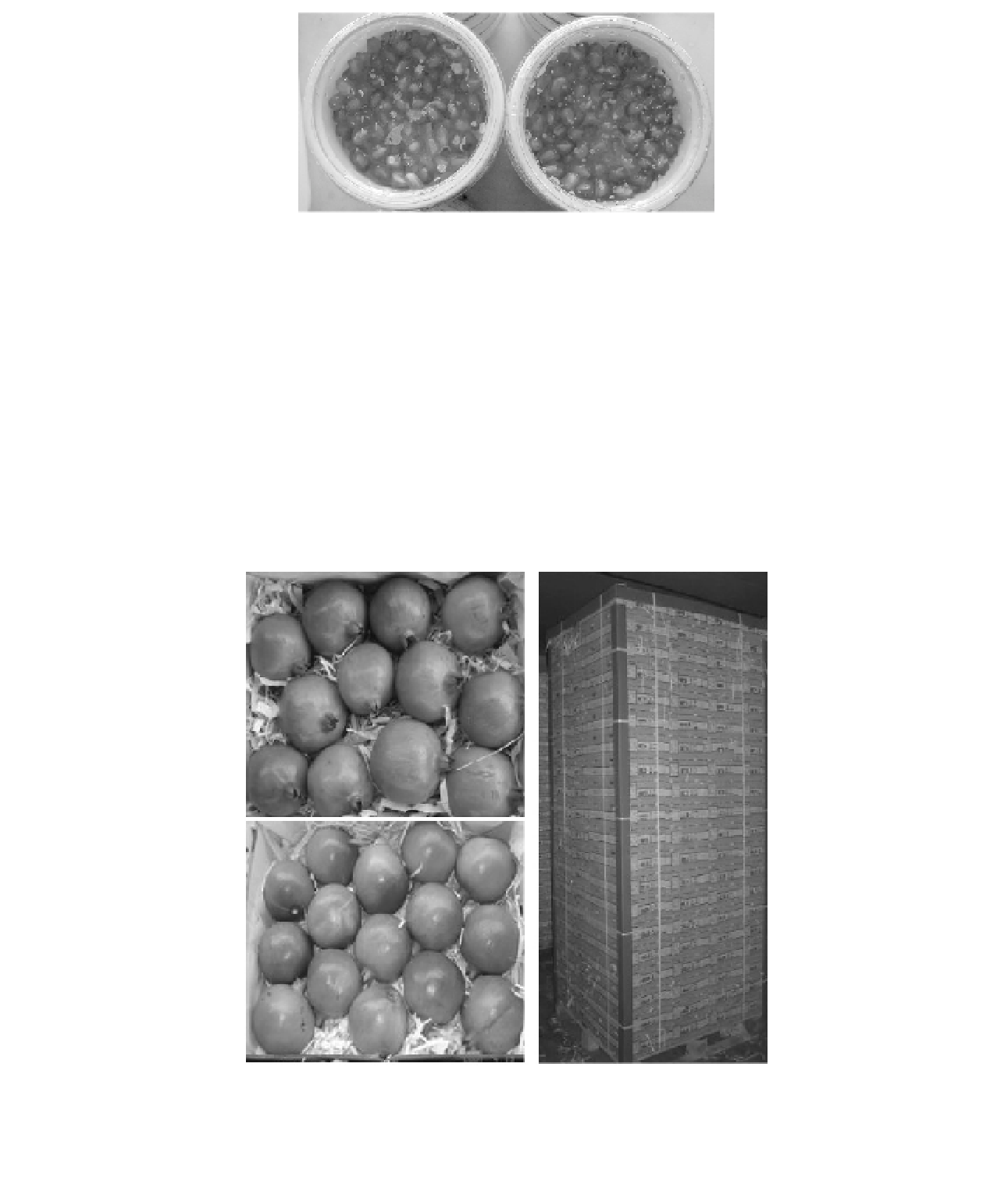Agriculture Reference
In-Depth Information
Figure 27.2.
Minimally processed pomegranate arils.
presented in removing arils from the fruit. For that rea-
son, minimally or fresh processed pomegranates, in ready-
to-eat form, have been developed (Fig. 27.2). Having in-
tact sensory and nutritional properties, the minimally pro-
cessed pomegranates are attracting more consumers. On
the other hand, pomegranate fruit is very susceptible to
sunburn, cracking, splitting, cuts or bruises, and chilling
injuries if stored at temperatures lower than 5
◦
C. These
defects make the pomegranate fruit unmarketable even
though their interior quality may still be acceptable. For
export markets, shippers package pomegranates in cartons
with cushioning material to minimize damage during long-
distance shipments (Fig. 27.3). The defected fruit is even-
tually destined to industrial use or animal consumption.
Therefore, minimally fresh processing of the externally
damaged pomegranates may be an excellent way to gain
commercial benefit from unmarketable whole fruit (L opez-
Rubira et al., 2005).
Manual extraction of the arils is laborious and difficult;
consequently, several machines extracting the arils are al-
ready on the market and in use. However, after the peeling
and extracting process, unwanted materials, such as white
segment and defective arils (broken, abnormally shaped
or colored, or other physiological disorders), are extracted
Figure 27.3.
Pomegranates packaged for export markets (top left, 12-count box; bottom left, 15-count box;
right, a pallet of 200 cartons packed together in 20 layers of 10 cartons each) (source: UNCTAD, 2010).

Search WWH ::

Custom Search